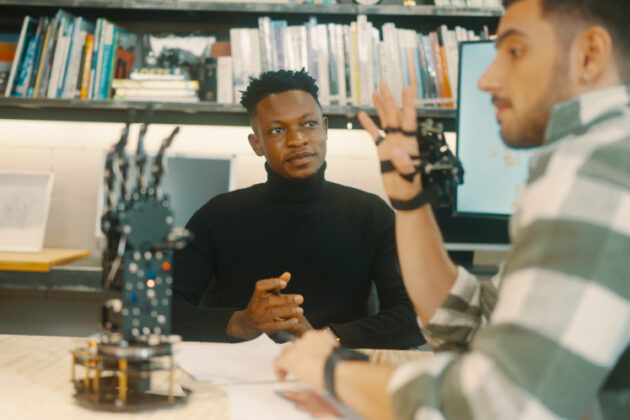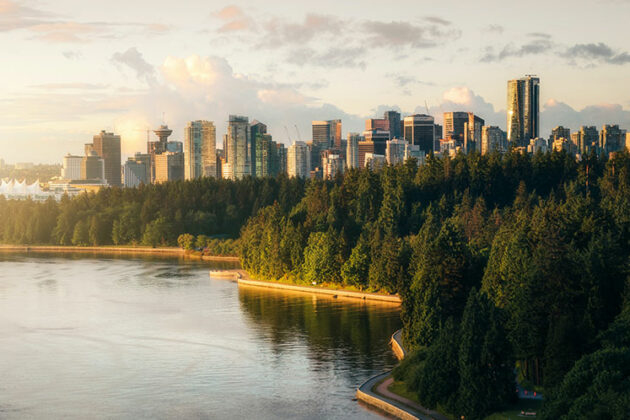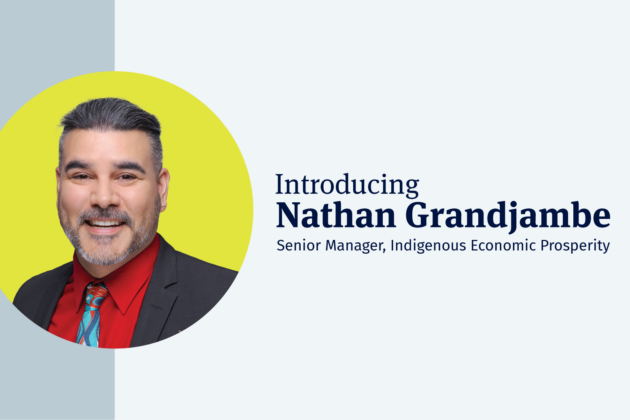ChangeLab is an immersive course taught at SFU that connects student changemakers to real problems happening in the City of Vancouver. Given the freedom to experiment and take risks, each team picks an issue to work on and comes up creative solutions with the guidance of their professors and mentors. Many of their actions have a positive impact on our community and some students even continue their initiatives after the course has ended.
At the Vancouver Economic Commission (VEC), we are happy to support and participate in this program as guest lectures, mentors, and experts on issues related to sustainability & the Greenest City Action Plan.
This year, our Sustainable Community Development coordinator, Pietra Basilij, posed this challenge to students: How can Vancouver reduce the amount of waste in its construction and demolition sectors using a circular economy model?
One of the ChangeLab student groups accepted her challenge. Naming themselves ‘Wastebusters,’ these students began creating circular solutions for the use and reuse of wood.
Read the story of their journey from the Wastebusters students themselves.

Connection Making: How our journey to connect wood scrap producers and suppliers in the False Creek Flats had connected our team together beyond the classroom environment.
By: Michelle Chen, Naomi Ambrose, Harpreet Kaur and Scott Lee
Students from Simon Fraser University’s Fall 2015 ChangeLab Program
Our story started back in September 2015, when we attended the first Simon Fraser University ChangeLab class. You could already tell back then that we were all eager, sitting at the edge of our seats, to learn about what was in store for us in the months ahead. For most of us, taking part in the ChangeLab course was an opportunity to finally work in an interdisciplinary setting across faculties, and to work on a project that, at the end of the day, would be beneficial to Vancouver’s False Creek Flats community. Most of us were strangers, passionate and driven university students brought together for the first time into an experiential classroom environment. Little did we know that throughout the course, we would become more connected: as individuals, as a team and as a cohort – to the greater Vancouver community.
Our Project: A Wood Scraps Material Exchange Coop
Our team’s project, Wood Source Co-op, was the product of four months of primary and secondary research, user-centric testing, and low fidelity prototypes, though our process was definitely not linear. We developed a plan for a membership-based co-operative business that would help facilitate material exchanges between a verified network of wood scrap suppliers and producers. Throughout our problem area research, interviewing, and prototyping we came to realize that reusable wood waste – such as wood scraps and chips, are still being thrown out into the landfill or recycled when they could be easily reused. After posting a Craigslist ad indicating that we may know woodworkers who are willing to give away scrap wood, wood chips, and sawdust, we received more than 20 phone calls, emails, and text messages of people who needed these materials. They just didn’t know who to go to, and for some of them, distance wasn’t a problem. An interview with Judson Beaumont from Straight Line Designs and Danielle Gilday from Yew Woodshop made us realize that people were in fact, willing to drive long distances to pick up wood waste scraps, for example from Maple Ridge to Vancouver, for sawdust.
One of our success stories included connecting a woman living in North Delta named Susan, with a woodworker named Wes in North Vancouver. Susan needed cedar sawdust for her composting toilets, and managed to collect enough cedar sawdust from Wes (who set aside the sawdust for her) for three composting toilets. Previously, Wes had spoke to us about his problem. He couldn’t find someone to take the sawdust he was producing at a large scale for his business. Before we connected him with Susan, he was routinely throwing out tons of sawdust into the landfills. We helped him find someone, and while Susan lived far from Vancouver, it goes to show that for people who are interested in reducing wood waste and are involved in sustainable practices, distance is not a limit.
Our Process: How We Got Here
Our team initially came together with an interest in material up-cycling after hearing about the works of Jessie and Theunis from Basic Design, and the works of some of the other students in our class. We knew that we were interested in reducing industrial waste in the False Creek Flats area, though how, we were not sure. Through user-testing and research, we narrowed down the scope of the waste we wanted to devise a solution for, from looking at both textiles and wood waste to purely reusable wood waste. The diagram below illustrates some of the key progressions of our project:
Diagram by: Michelle Chen
Throughout our process, we were guided by valuable insights from our preliminary (and subsequent) interviews. Some of these insights include:
- Artisans and woodworkers are already interested or are actively being sustainable.
- Main concerns they told us were that they would store these wood scraps in their studios until someone would use them, but most of the time they ran out of room, or couldn’t find someone for the materials. Because of this, they would have to eventually take these wood scraps and discard them in garbage bins or directly to a recycling depot.
Video by: Naomi Ambrose
Then and Now: Highlights, Insights, and Our Plans in the Future
Our journey to connect wood scrap producers and users together also connected our team and the rest of the Vancouver community. Our class activities, Skype meetings, Facebook conversations, face-to-face team meetings all helped towards bringing our team closer together. The obstacles we encountered, our passions, drive and personalities also brought us closer together.
As a team, we also became interconnected with the Vancouver False Creek Flats community during the four months of our project research and development. We spent many hours in the Flats region – where we also familiarized ourselves and established relationships with the businesses and individuals who reside there. We were also grateful and thankful for the connections we made with these individuals. We appreciated the journey that we took, and the amazing works and personalities we encountered in the False Creek Flats. It was a wonderful opportunity to be part of such an experiential learning program at Simon Fraser University.
Our future plans
We are interested in carrying our project forward – however, we haven’t fully decided the exact areas that we’d to pursue. We may pursue the creation of product lines from small, pocket cedar air-fresheners out of cedar wood chips that we successfully created.
The feedback we gained at City Studio’s HUBBUB presentation, motivated us into exploring other methods of reducing reusable wood waste, as well as connecting material users and suppliers together by collaborating with the Vancouver Economic Commission. We also received a lot of feedback on different ideas to prototype, and we are most likely going to go forward with these ideas. We’d also like to regroup to consolidate all the valuable insights and feedback we have received since the HUBBUB. We are excited for the next step of our journey.


